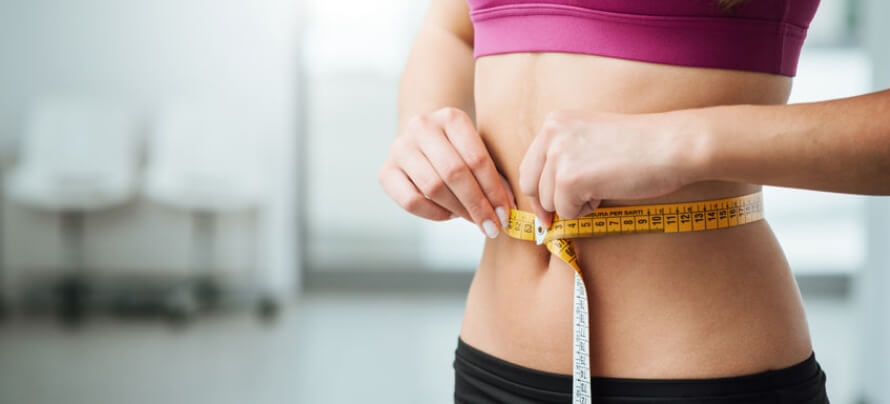Key Takeaways
- If you follow a handful of effective dieting strategies, there’s no reason you have to gain weight during the quarantine. You might even be able to lose some fat.
- You’ll want to eat an appropriate calorie intake for your (new) activity levels, eat lots of protein and fiber-rich fruits and veggies, and use a few other tricks to avoid overeating.
- Keep reading to learn how to do all of this, including meal planning and food recommendations, and more!
It’s hard to believe that just a few weeks ago, life was business as usual.
Now, we’re just a few weeks into the COVID-19 lockdown, and it’s looking like this will be the “new normal” for at least another few months.
And us fitness folks are having a time of it.
For one thing, you have to work out from home, and if that weren’t bad enough, some grocery stores are running out of stock on meat, vegetables, fruit, and other healthy staples.
So you’re probably wondering, how the heck are you supposed to eat healthy through this mess?
Should you cut, bulk, or maintain?
And how are you supposed to avoid overeating?
You’ve probably seen news stories about people binge eating junk food to mollify their frayed nerves, and others grazing throughout the day to mitigate their boredom, leading some people to call weight gained during the lockdown the “quarantine 15” or “COVID-15.”
Well, the good news is that if you know what you’re doing, eating healthy during the quarantine is bat . . . er . . . duck soup.
In this article, you’ll learn exactly how you should diet to not only avoid getting fat, but to maintain your muscle mass and even lose fat while stuck inside.
Let’s start at square one: how many calories you should eat.
Should You Lean Bulk, Cut, or Maintain During the Quarantine?
Whether you should lean bulk, cut, or eat enough calories to maintain your weight (“maintain”) during a quarantine depends on your training and your current body composition goals.
If you have access to a well-equipped home gym with a squat rack, bench, and dumbbells, then any of these options are fine. Just keep following your current strength training program and calorie and macronutrient targets, and you’ll keep making progress.
If you’re like the rest of us, though, and you’re stuck putzing around with bodyweight exercises, jerry rigged home workout equipment, and maybe some bands and a dumbbell or two, you’re more limited in your options.
So, what should you do with your diet?
Well, you probably shouldn’t bulk.
While home workouts can help you effectively maintain muscle and strength and maybe even make some minor gains, they aren’t nearly as effective at stimulating muscle growth as heavy barbell- and dumbbell-based workouts.
Thus, any extra calories you consume are more likely to be converted into body fat than muscle when you’re doing these kinds of workouts, which makes even lean bulking a poor choice.
For example, under ideal circumstances (lots of heavy barbell and dumbbell training, high-protein dieting, lots of sleep, etc.) you can expect about half the weight you gain when bulking to be fat and the other half to be muscle.
When you’re following a subpar workout program (like a bodyweight workout routine), you’ll probably gain even less muscle and more fat.
I don’t know of any scientific studies that would give us an exact ratio of fat to muscle gain in response to bodyweight training, but I wouldn’t be surprised if the majority of weight you gain while “lean” bulking and doing bodyweight workouts is fat instead of muscle.
That is, while 50% of the weight you gain when barbell/dumbbell training might be muscle, as little as 20 to 30% might be muscle when doing bodyweight workouts.
In other words, lean bulking when you can’t follow an optimal strength training program is highly inefficient. When it comes to your long-term body composition goals, you’re better off waiting to lean bulk until your gym reopens.
Cutting while quarantined is also problematic for the same reasons.
Barbell and dumbbell-based training is the most effective way to maintain your muscle mass while restricting your calorie intake, and when you can’t do this kind of training, you run a higher risk of losing muscle and strength while cutting.
Bodyweight and home workouts can provide enough of a muscle-building stimulus to help mitigate your losses, but holding onto all of your gains after several months of this is a tall order.
That said, if you play your cards right, you probably won’t lose much muscle or strength while cutting during the quarantine.
Why?
Because it takes a much smaller amount of training to maintain your muscle mass and strength than it goes to gain it in the first place.
An excellent example of this comes from a study conducted by scientists at the University of Alabama on 70 untrained men, about half of whom were young to middle-age (age 20 to 35) and half were elderly (60 to 75).
Everyone did three lower body workouts three times per week, for a total of 27 sets per week.
After four months of this protocol, everyone made significant gains in muscle mass and strength, with the younger men increasing their thigh muscle mass by about 6% and knee extension one-rep max (1RM) by 38%. The older men also made substantial improvements, increasing their thigh muscle mass by 4% and knee extension 1RM by 36%.
Here comes the interesting part.
The researchers split everyone into three groups:
- A detraining group that didn’t train at all
- A low volume group that trained with 1/3 of their original number of sets (9 sets per week)
- A very low volume group that trained with 1/9 of their original number of sets (3 sets per week)
Obviously, a home workout program isn’t the same as a low-volume workout program, but they’re both suboptimal for stimulating muscle growth, so I think it’s fair to lump them into the same boat when it comes to maintaining muscle mass.
Everyone followed their programs for eight months, and then the researchers remeasured their muscle mass and strength to see how well they were able to maintain their gains.
Here’s what the results looked like:
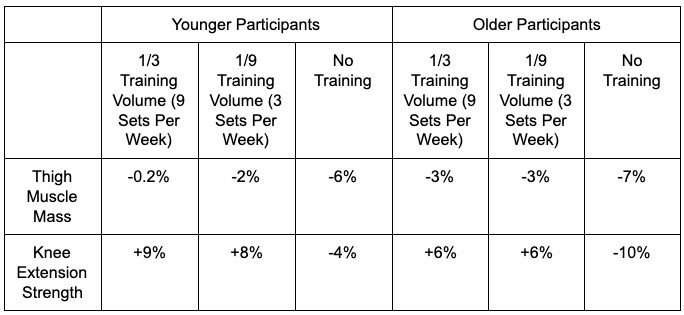
On the whole, the younger participants (age 20 to 35) maintained more or less all of their muscle mass and continued to get stronger following the low-volume training programs. The older folks lost significantly more muscle, but continued gaining strength. There aren’t any similar studies to this one on women, but I’d imagine the results would look similar.
The takeaway?
If you’re young or middle-aged, you can maintain the bulk of your muscle mass and even continue to gain strength on a very low-volume training plan.
If you’re older, you can still maintain most of your muscle mass on a low-volume training program, but you’ll probably need to do more than younger folks.
Now, there are a few things you should know about this study before you extrapolate the results to your own situation.
One the one hand, these people were new to weightlifting, weren’t in a calorie deficit, and were doing heavy strength training (leg extensions, squats, and leg presses), all of which helps preserve muscle mass. If they were more experienced, cutting, and limited to bodyweight exercises, they probably would have lost a lot more muscle and strength.
On the other hand, this study also lasted eight freaking months. Despite the doom-and-gloom predictions being promoted by the media, it’s unlikely the COVID-19 will last that long, and you’ll probably be able to get back in the gym later this summer. What’s more, the people in this study were allowed to eat whatever they wanted, and likely weren’t following a high-protein diet, which also increased their chances of losing muscle.
If you do follow a high-protein diet and you’re able to get back to your normal training program sooner than eight months from now, your chances of losing muscle also drop considerably.
So, circling back to our original question about cutting, where does that leave us?
Here’s my take:
If you follow a well-designed home workout routine (like this one), eat plenty of protein (more on this in a moment), and maintain a small to moderate (not reckless) calorie deficit, you can probably cut while losing very little to no muscle during your quarantine.
And what about maintaining—eating about the same number of calories that you burn?
This is probably the safest option during the quarantine—the equivalent of putting your money in bonds instead of stocks.
You probably won’t gain much of any muscle or strength by maintaining, but you’re also very unlikely to lose any, either.
When you’re eating at maintenance, you can go several months without any kind of strength training without losing muscle. Thus, even following a home workout program can probably help you hold onto your gains for three or four months without losing any muscle.
If you want to learn how to set your calories for lean bulking (not recommended), cutting (a perfectly viable option), or maintaining (the safest option), take the Legion Diet Quiz.
Macronutrient Recommendations During Quarantine
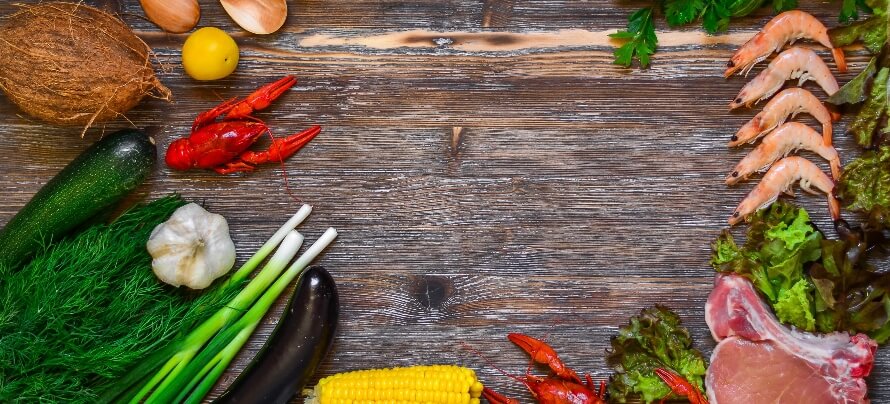
First and foremost, make sure you’re eating a lot of protein.
Following a high-protein diet during the quarantine has a number of benefits:
- It suppresses your appetite far more effectively than carbs or fat
- It has a higher thermic effect of food (TEF), meaning it requires more calories to digest than carbs or fat
- It significantly reduces muscle loss, even when you aren’t lifting weights or are following a low-volume workout plan
How much protein are we talking about?
If you’re lean bulking or maintaining, aim for around 1.8 to 2.2 grams of protein per kilogram of body weight per day.
If you’re cutting, aim for around 2 to 3 grams per kilogram of body weight per day.
Now, if you’re a regular around these parts, you probably knew all that.
Here’s something you might not know about protein:
If you find yourself overeating during the quarantine, eating a lot of protein will probably also cause less body fat gain than overeating carbs or fat.
Multiple studies have found that “overfeeding,” as researchers call it, on vast quantities of protein causes little to no fat gain and may even cause a slight increase in muscle gain when combined with strength training.
For example, a study conducted by scientists at Nova Southeastern University divided 30 healthy, resistance-trained men and women into two groups:
- A normal protein diet group, which ate 1.8 grams of protein per kilogram of body weight per day (the same amount they normally ate). This worked out to around 150 grams of protein per day.
- A very high protein diet group, which ate 4.4 grams of protein per kilogram of body weight per day. (An 800 calorie surplus per day). This worked out to just over 300 grams of protein per day.
Otherwise, both groups followed their normal diets and strength programs. The researchers measured the participant’s weight and body composition before and after the study, which lasted eight weeks. The participants also carefully tracked their calorie intake using either an app or a paper journal, and reported the results to the researchers.
The result?
Despite eating 800 more calories per day than they were burning, the very high protein diet group gained almost exactly the same amount of weight, body fat, and muscle as the normal protein diet group (the very high protein group actually lost a small amount of body fat).
Now, before you start inhaling fat-free cottage cheese by the cartload, it’s possible that the reason the very high-protein diet group didn’t gain weight was because they were so stuffed they ate significantly less carbs and fat.
That said, the dietary records did show they were indeed eating about 800 calories more than they burned each day.
So, what does this mean?
If you’re struggling to control your food intake during the quarantine, you’ll probably gain a lot less body fat if you overeat on protein instead of carbs or fat.
And don’t worry about running into negative health effects—studies have consistently found that eating even gargantuan portions of protein doesn’t negatively affect otherwise healthy people.
In terms of your fat intake, you’ll want to set that at about the same level you normally would, or around 20 to 25% of your total calories.
Finally, you’ll want to fill your remaining “calorie budget” with carbs.
A good rule of thumb when quarantined would be something like 40% protein, 40% carbs, 20% fat.
Or, if you want to try the very high protein diet like that used by the people in this study, your macros would be more like 50% protein, 30% carbs, and 20% fat.
For example, I weigh 170 pounds, and since I’m cutting, I’m eating around 12 calories per pound of body weight per day (~2,000 calories).
If I followed the 40/40/20 option, my macros would look like this:
- 200 grams of protein
- 200 grams of carbs
- ~45 grams of fat
And if I followed the 50/30/20 option, my macros would look like this:
- 250 grams of protein
- 150 grams of carbs
- ~45 grams of fat
Keep in mind that if you want to follow the very high protein option and overeat, you shouldn’t use a percentage of your total daily calorie intake to estimate your protein intake (this will produce some very high and very gastrointestinally-disturbing numbers).
Instead, you want to set your protein intake at 2 grams per pound of body weight (~4.4 grams per kg), set your fat intake at 20% of calories, and fill in the rest of your calorie budget with carbs.
Here’s what that would look like for me.
I normally eat around 3,000 calories per day to maintain my weight. Let’s say I decide to eat 3,500 calories per day.
First, I’d set my protein intake:
170 (my body weight) x 2 (grams of protein per pound of body weight) = 340 grams of protein per day.
Each gram of protein contains 4 calories, so this means I’m eating around 1,360 calories worth of protein per day.
Next, I’d set my fat intake:
3,500 (my calorie intake) x 0.2 = ~78 grams of fat per day.
Each gram of fat contains 9 calories, so this means I’m eating around 700 calories worth of fat per day.
Then I figure out how many calories I have remaining:
3,500 – 700 (calories from fat) – 1,360 (calories from protein) = 1,440 calories remaining.
As each gram of carbohydrate contains about 4 calories, you’d simply divide your remaining calories (1,440) by 4 to see how many grams of carbs you should eat per day.
1,440 / 4 = 360 grams of carbs per day.
Thus, my final overeating-with-minimal-fat-gain macros would be:
- 3,500 calories
- 340 grams of protein
- 360 grams of carbs
- 78 grams of fat
Now, I don’t recommend you do this (there’s no reason to overeat unless you’re lean bulking or celebrating, and methinks both of those can wait until the quarantine is over), but if you do overeat, this is the best way to limit the fallout.
And again, if you’d like even more specific advice about how many calories, how much of each macronutrient, and which foods you should eat to reach your health and fitness goals, take the Legion Diet Quiz.
How to Avoid Overeating During a Quarantine
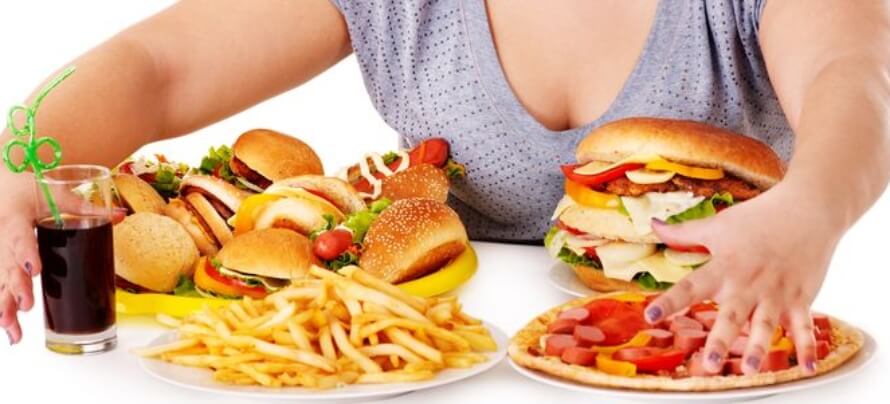
While the COVID-19 quarantine hasn’t done the economy any favors, it has spiked sales of a few food products. You know, healthy stuff like . . .
- Oreos
- Potato chips
- Popcorn
- Spam
- Processed meat
- Mac and cheese
. . . and other armageddon fare.
Why?
Well, many people are turning to food to allay their fear and boredom.
Others look at any disruption in their normal routine as an excuse to pig out on junk food.
And there’s probably a few silly souls who truly believe Ragnarök is upon us, and are determined to inhale as much sugar, salt, and fat as they can before they leave their corporal problems behind.
In any case, don’t be that guy (or gal).
Being stuck indoors doesn’t have to make healthy eating more difficult.
Sure, it might be harder to find a few of your usual staples, but with some small changes to your diet and daily routine, there’s no reason you can’t maintain your current body composition or even lose fat during the quarantine.
Here’s how:
- Stay busy.
- Eat more protein.
- Eat more fiber and low-energy density foods.
- Minimize your consumption of alcohol, sugar, and highly processed foods.
- Prepare your own meals (minimize take-out and delivery).
- Follow a meal plan.
- Chill out.
- Change your expectations.
- Keep working out.
- Weigh yourself every day (or don’t weigh yourself at all).
Let’s quickly review each point.
Stay busy.
One of the single best ways to avoid overeating is to find something else that’s more interesting to focus on.
Maybe it’s reading a book, learning a new skill, taking an online course, or diving deeper into your day job. Whatever it is, it’s better than ruminating on your predicament and turning to food to calm your nerves and fill your time and stomach.
Check out this article if you want to learn how to fill your time productively during the quarantine:
My Guide to Staying Fit, Productive, and Sane While Self-Quarantined
Eat more protein.
As you learned a moment ago, protein is far more satiating than carbs or fat, and the more protein you eat, the less tempted you’ll be to indulge in other junk.
Aim to have 40 to 60 grams of protein or more with each meal, and try to eat your protein-rich foods at the beginning of your meal, before you have a chance to fill up on other, higher-calorie foods.
Some good sources of protein include things like:
- Chicken
- Turkey
- Low-fat cuts of beef and pork
- Low-fat seafood like tilapia, cod, and shrimp
- Low-fat cottage cheese, Greek yogurt, Skyr, and quark
- Whey, casein, and plant protein powders
Check out these articles for delicious high-protein recipes:
20 Healthy Chicken Recipes That You’ll Be Excited to Eat
20 Healthy Ground Beef Recipes That Make This Meat Great Again
20 Pork Chop Recipes That Take Dinner from Bland to Grand
5 Low-Fat Greek Yogurt Recipes That Are Better Than the Traditional Dishes
20 Meatless High-Protein Recipes That You’ve Got to Try
20 Protein Powder Recipes You Won’t Have to Choke Down
Eat more fiber and low-energy density foods.
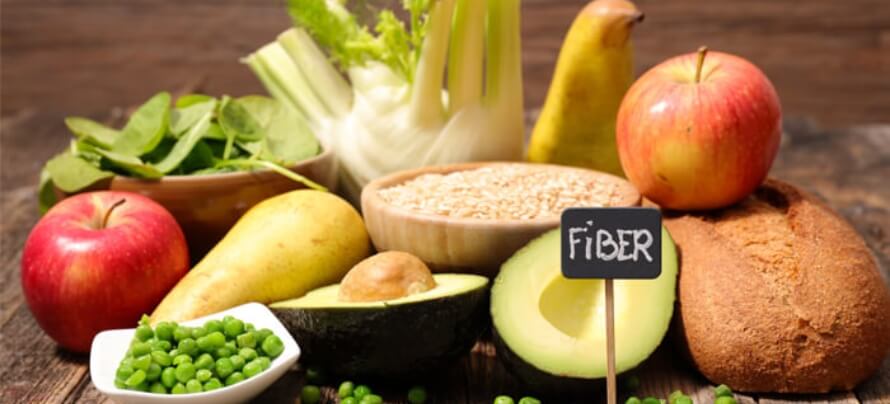
After high-protein foods, high-fiber foods like fruits, vegetables, and whole grains tend to be the most satiating per calorie.
During the quarantine, try to consume low-calorie fruits and vegetables like apples, berries, watermelon, broccoli, zucchini, and cauliflower with every meal, and if you need the extra calories, then you can also consume some whole grains like barley, brown rice, and quinoa.
(Keep reading to see more food recommendations!)
Read this article to learn more about the importance of high fiber foods:
How Much Fiber Should You Get Every Day and Why?
Minimize your consumption of alcohol, sugar, and highly processed foods.
None of these foods are inherently fattening, but chances are good you aren’t exercising or moving as much as you usually do, and thus you have a smaller calorie budget for indulgences like these.
A good rule of thumb is to limit your intake of alcohol, sugar, and processed foods to less than 20% of your total calories, with less than that being even better.
Read this article to learn more about how to strategically include foods like this in your diet:
How to Get the Body You Want With Flexible Dieting
Prepare your own meals (minimize take-out and delivery).
If your normal diet involves a lot of take-out and restaurant meals, now’s the perfect time to get in the habit of preparing your own meals.
Not only will you save money, you’ll also eat healthier and have a better idea of how many calories and grams of protein, carbs, and fats you consume each day (which makes meal planning and managing your body composition much easier).
Speaking of meal planning . . .
Follow a meal plan.
A meal plan is like a personal schedule for your diet. It tells you exactly what to eat, how much, and when to achieve your health and body composition goals.
Not only does this guarantee results, it’s also a lot more enjoyable and time efficient than tracking your meals on the fly using a calorie-counting app like MyFitnessPal. It’s also a particularly good idea if you’re the kind of person who tends to use food to abate boredom and stress.
Just create a meal plan, only eat the foods on your plan in the right amounts, and you’ll emerge on the other side of this societal lockdown looking about the same way you did before (or even better).
If you want to learn how to create an effective meal plan, read these articles and follow the instructions:
The Definitive Guide to Effective Meal Planning
7 Tips for Making Perfect Meal Plans for Weight Loss
How to Make Meal Plans That Work For Any Diet
Chill out.
Brush up on the facts surrounding COVID-19. Yes, a lot of people are infected. Yes, the stonk market looks like a roller coaster. And yes, daily cases are still rising for the time being.
But no, it’s not the end of the world, and many of the early estimates about mortality rates have proven to be exaggerated or based on faulty data.
Life will be more inconvenient for a while, but there’s no reason to let this shatter your psyche to the point your only solace is bingeing on food.
Stay optimistic but prepared, stick to your normal routines and habits as best you can, and things will probably work out in the end.
Change your expectations.

If you had planned on cutting aggressively to get in shape for summer, or carefully lean bulking to gain muscle and strength, it’s probably best to put those plans on hold for now.
While cutting is fine if you follow the steps outlined in this article, bulking is probably a bad idea. The safest option would be to simply try to maintain your current strength and muscle mass, and then pick up where you left off after this whole brouhaha has subsided and life is mostly back to normal.
Keep working out.
There are five main reasons for this:
- It’ll help you stay in the habit of working out.
- It’ll help you maintain your strength and muscle mass.
- It’ll help you avoid weight gain and maybe even lose some weight (if you’re cutting, too).
- It’ll help you maintain your sanity (what else have you got to do?).
- It’ll make you feel better.
Check out this article to learn how to work out during the quarantine:
The Best Home Workout Routines for When You Can’t Go to the Gym
Weigh yourself every day (or don’t weigh yourself at all).
Whether or not you keep weighing yourself during the lockdown depends on your personality.
If you’re an experienced dieter and you know not to get too worked up over increases or decreases in your scale weight, it’s a good idea to keep weighing yourself as a form of accountability. After all, research has consistently shown that people who keep tabs on their body weight tend to do a better job of managing it.
On the other hand, if seeing the number on the scale not move or even go up tends to take the starch out of you or raise your hackles, it’s probably better if you don’t weigh yourself during the quarantine.
Just stick to the steps in this article, trust the process, and don’t worry too much if your weight goes up or down a little.
Foods to Buy During a Quarantine
Assuming your grocery store isn’t out of stock of anything, then you can of course keep buying whatever you normally do.
If your grocery store does happen to be out of some of your chief healthy staples, peruse these lists and see if you can find any close substitutes. You might be surprised at what you find.
For example, my local grocery store shelves were devoid of any chicken, but there were at least 15 frozen turkeys just waiting to be devoured.
Frozen Meat
- Beef
- Fish like salmon, tilapia, cod, etc.
- Shrimp and shellfish
- Pork
- Turkey
- Chicken
Canned Vegetables and Legumes
- Carrots
- Green beans
- Tomatoes
- Peppers
- Beats
- Black-eyed peas
- Chickpeas
- Lentils
- Kidney beans
- Peas
Canned and Dried Fruits
- Peaches
- Pears
- Pineapple
- Raisins
- Craisins
- Dates
- Figs
- Mango
- Apricots
Nuts and Nut Butters
Here are the nuts:
- Peanuts
- Walnuts
- Hazelnuts
- Almonds
- Cashews
- Pistachios
- Macadamia nuts
And then the nut butters:
- Peanut butter
- Almond butter
- Cashew butter
- Sun butter
Shelf-Stable Grains
- Brown and white rice
- Barley
- Whole wheat pasta
- Bulgur
- Quinoa
- Oats
Canned or Smoked Fish
- Tuna
- Salmon
- Mackerel
Chocolate
It’s shelf stable, high in calories, and delicious.
(Pro tip: 60+% cocoa dark chocolate tends to be more shelf-stable and resistant to melting than milk chocolate).
Beverages and Condiments
- Coffee
- Tea
- Canned or powdered milk
- Ketchup
- Hot sauce
- Mustard
- Mayonnaise
- Jam
- Barbecue sauce
The Bottom Line on How to Eat When Quarantined
Eating healthy during the quarantine doesn’t have to be a chore. In fact, if you follow the tips in this article, you may even eat healthier during this lockdown than you did before.
First of all, bulking is probably not a good idea right now (even lean bulking). Instead, either eat roughly the same number of calories you burn or cut. If you just, just make sure you’re also following an effective home workout routine (like this one!).
Second, if you’re having trouble controlling your calorie intake right now (as many people are), use these tips to reign in your eating habits:
- Stay busy
- Eat more protein
- Eat more fiber and low-energy density foods
- Minimize your consumption of alcohol, sugar, and highly processed foods
- Prepare your own meals (minimize take-out and delivery).
- Follow a meal plan
- Chill out
- Change your expectations
- Keep working out
- Weigh yourself every day (or don’t weigh yourself at all)
Even if your grocery store is running low on a few of your favorite healthy foods, you should be able to cobble together tasty, healthy, macro-friendly meals from the food recommendations in this article.
What do you think of this quarantine diet plan? Anything else you’d like to share? Let me know in the comments section below!
Scientific References +
- Holick MF, Binkley NC, Bischoff-Ferrari HA, et al. Evaluation, treatment, and prevention of vitamin D deficiency: An endocrine society clinical practice guideline. J Clin Endocrinol Metab. 2011;96(7):1911-1930. doi:10.1210/jc.2011-0385
- Martineau AR, Jolliffe DA, Hooper RL, et al. Vitamin D supplementation to prevent acute respiratory tract infections: Systematic review and meta-analysis of individual participant data. BMJ. 2017;356. doi:10.1136/bmj.i6583
- Ginde AA, Blatchford P, Breese K, et al. High-Dose Monthly Vitamin D for Prevention of Acute Respiratory Infection in Older Long-Term Care Residents: A Randomized Clinical Trial. J Am Geriatr Soc. 2017;65(3):496-503. doi:10.1111/jgs.14679
- Bouillon R, Carmeliet G, Verlinden L, et al. Vitamin D and human health: Lessons from vitamin D receptor null mice. Endocr Rev. 2008;29(6):726-776. doi:10.1210/er.2008-0004
- Bikle DD. Vitamin D and bone. Curr Osteoporos Rep. 2012;10(2):151-159. doi:10.1007/s11914-012-0098-z
- Annweiler C, Rolland Y, Schott AM, Blain H, Vellas B, Beauchet O. Serum vitamin D deficiency as a predictor of incident non-Alzheimer dementias: A 7-year longitudinal study. Dement Geriatr Cogn Disord. 2012;32(4):273-278. doi:10.1159/000334944
- Huang Y, Li X, Wang M, et al. Lipoprotein lipase links vitamin D, insulin resistance, and type 2 diabetes: A cross-sectional epidemiological study. Cardiovasc Diabetol. 2013;12(1):17. doi:10.1186/1475-2840-12-17
- Pilz S, Tomaschitz A, Drechsler C, Dekker JM, März W. Vitamin D deficiency and myocardial diseases. Mol Nutr Food Res. 2010;54(8):1103-1113. doi:10.1002/mnfr.200900474
- Michael Holick Vitamin D is essential to the modern indoor lifestyle | Science News. https://www.sciencenews.org/article/vitamin-d-essential-modern-indoor-lifestyle. Accessed April 7, 2020.
- F. Holick M. Vitamin D: Evolutionary, Physiological and Health Perspectives. Curr Drug Targets. 2010;12(1):4-18. doi:10.2174/138945011793591635
- Hemilä H, Chalker E. Vitamin C for preventing and treating the common cold. Cochrane Database Syst Rev. 2013;2013(1). doi:10.1002/14651858.CD000980.pub4
- Anderson TW, Suranyi G, Beaton GH. The effect on winter illness of large doses of vitamin C. Can Med Assoc J. 1974;111(1):31-36. https://www.ncbi.nlm.nih.gov/pubmed/4601508. Accessed April 7, 2020.
- Carr AC, Maggini S. Vitamin C and immune function. Nutrients. 2017;9(11). doi:10.3390/nu9111211
- Hemilä H. Zinc lozenges and the common cold: a meta-analysis comparing zinc acetate and zinc gluconate, and the role of zinc dosage. JRSM Open. 2017;8(5):205427041769429. doi:10.1177/2054270417694291
- Singh M. Zinc for the common cold. - PubMed - NCBI. https://www.ncbi.nlm.nih.gov/pubmed/21328251. Accessed April 7, 2020.
- Mohsenpour B, Ahmadi A, Mohammadi Baneh A, et al. Relation between serum zinc levels and recurrent urinary tract infections in female patients: A case-control study. Med J Islam Repub Iran. 2019;33:33. doi:10.34171/mjiri.33.33
- Eijkelkamp BA, Morey JR, Neville SL, et al. Dietary zinc and the control of Streptococcus pneumoniae infection. PLoS Pathog. 2019;15(8):e1007957. doi:10.1371/journal.ppat.1007957
- Niccum BA1, Stein DJ2, Behm BW3 HR. Zinc Deficiency and the Recurrence of Clostridium difficile Infection after Fecal Microbiota Transplant: A Retrospective Cohort Study. - PubMed - NCBI. https://www.ncbi.nlm.nih.gov/pubmed/30405910. Accessed April 7, 2020.
- High KP, Case D, Hurd D, et al. A Randomized, Controlled Trial of Panax quinquefolius Extract (CVT-E002) to Reduce Respiratory Infection in Patients With Chronic Lymphocytic Leukemia. J Support Oncol. 2012;10(5):195-201. doi:10.1016/j.suponc.2011.10.005
- McElhaney JE, Goel V, Toane B, Hooten J, Shan JJ. Efficacy of COLD-fX in the prevention of respiratory symptoms in community-dwelling adults: A randomized, double-blinded, placebo controlled trial. J Altern Complement Med. 2006;12(2):153-157. doi:10.1089/acm.2006.12.153
- McElhaney JE, Gravenstein S, Cole SK, et al. A Placebo-Controlled Trial of a Proprietary Extract of North American Ginseng (CVT-E002) to Prevent Acute Respiratory Illness in Institutionalized Older Adults. J Am Geriatr Soc. 2004;52(1):13-19. doi:10.1111/j.1532-5415.2004.52004.x
- Qi B, Wang S, Wang Q, et al. Characterization and immunostimulating effects on murine peritoneal macrophages of a novel protein isolated from Panax quinquefolius L. J Ethnopharmacol. 2016;193:700-705. doi:10.1016/j.jep.2016.10.034
- Yan J, Ma Y, Zhao F, Gu W, Jiao Y. Identification of immunomodulatory signatures induced by american ginseng in murine immune cells. Evid Based Complement Alternat Med. 2013;2013:972814. doi:10.1155/2013/972814
- Ghosh R, Smith SA, Nwangwa EE, et al. Panax quinquefolius (North American ginseng) cell suspension culture as a source of bioactive polysaccharides: Immunostimulatory activity and characterization of a neutral polysaccharide AGC1. Int J Biol Macromol. 2019;139:221-232. doi:10.1016/j.ijbiomac.2019.07.215
- Jeong YY, Park HJ, Cho YW, et al. Aged red garlic extract reduces cigarette smoke extract-induced cell death in human bronchial smooth muscle cells by increasing intracellular glutathione levels. Phyther Res. 2012;26(1):18-25. doi:10.1002/ptr.3502
- Yeh YY, Liu L. Cholesterol-lowering effect of garlic extracts and organosulfur compounds: human and animal studies. J Nutr. 2001;131(3s):989S-93S. doi:10.1093/jn/131.3.989S
- Larijani VN, Ahmadi N, Zeb I, Khan F, Flores F, Budoff M. Beneficial effects of aged garlic extract and coenzyme Q10 on vascular elasticity and endothelial function: The FAITH randomized clinical trial. Nutrition. 2013;29(1):71-75. doi:10.1016/j.nut.2012.03.016
- Budoff MJ, Takasu J, Flores FR, et al. Inhibiting progression of coronary calcification using Aged Garlic Extract in patients receiving statin therapy: A preliminary study. Prev Med (Baltim). 2004;39(5):985-991. doi:10.1016/j.ypmed.2004.04.012
- Ried K, Frank OR, Stocks NP. Aged garlic extract reduces blood pressure in hypertensives: A dose-response trial. Eur J Clin Nutr. 2013;67(1):64-70. doi:10.1038/ejcn.2012.178
- Josling P. Preventing the common cold with a garlic supplement: a double-blind, placebo-controlled survey. Adv Ther. 18(4):189-193. doi:10.1007/bf02850113
- Nantz MP, Rowe CA, Muller CE, Creasy RA, Stanilka JM, Percival SS. Supplementation with aged garlic extract improves both NK and γδ-T cell function and reduces the severity of cold and flu symptoms: A randomized, double-blind, placebo-controlled nutrition intervention. Clin Nutr. 2012;31(3):337-344. doi:10.1016/j.clnu.2011.11.019
- Richard S. Rivlin. Historical Perspective on the Use of Garlic | The Journal of Nutrition | Oxford Academic. https://academic.oup.com/jn/article/131/3/951S/4687053. Accessed April 7, 2020.
- Badar VA, Thawani VR, Wakode PT, et al. Efficacy of Tinospora cordifolia in allergic rhinitis. J Ethnopharmacol. 2005;96(3):445-449. doi:10.1016/j.jep.2004.09.034
- Supe A, Purandare H. Immunomodulatory role of Tinospora cordifolia as an adjuvant in surgical treatment of diabetic foot ulcers: A prospective randomized controlled study. Indian J Med Sci. 2007;61(6):347. doi:10.4103/0019-5359.32682
- Lizogub VG, Riley DS, Heger M. Efficacy of a Pelargonium Sidoides Preparation in Patients With the Common Cold: A Randomized, Double Blind, Placebo-Controlled Clinical Trial. Explor J Sci Heal. 2007;3(6):573-584. doi:10.1016/j.explore.2007.09.004
- Agbabiaka TB, Guo R, Ernst E. Pelargonium sidoides for acute bronchitis: A systematic review and meta-analysis. Phytomedicine. 2008;15(5):378-385. doi:10.1016/j.phymed.2007.11.023
- Janecki A, Conrad A, Engels I, Frank U, Kolodziej H. Evaluation of an aqueous-ethanolic extract from Pelargonium sidoides (EPs® 7630) for its activity against group A-streptococci adhesion to human HEp-2 epithelial cells. J Ethnopharmacol. 2011;133(1):147-152. doi:10.1016/j.jep.2010.09.018
- Leaf A, Antonio J. The Effects of Overfeeding on Body Composition: The Role of Macronutrient Composition - A Narrative Review. Int J Exerc Sci. 2017;10(8):1275-1296. http://www.ncbi.nlm.nih.gov/pubmed/29399253. Accessed April 7, 2020.
- Antonio J, Peacock CA, Ellerbroek A, Fromhoff B, Silver T. The effects of consuming a high protein diet (4.4 g/kg/d) on body composition in resistance-trained individuals. J Int Soc Sports Nutr. 2014;11(1):19. doi:10.1186/1550-2783-11-19
- Leaf A, Antonio J. The Effects of Overfeeding on Body Composition: The Role of Macronutrient Composition - A Narrative Review. Int J Exerc Sci. 2017;10(8):1275-1296. http://www.ncbi.nlm.nih.gov/pubmed/29399253. Accessed April 7, 2020.
- Helms ER, Aragon AA, Fitschen PJ. Evidence-based recommendations for natural bodybuilding contest preparation: Nutrition and supplementation. J Int Soc Sports Nutr. 2014;11(1):1-20. doi:10.1186/1550-2783-11-20
- Bickel CS, Cross JM, Bamman MM. Exercise dosing to retain resistance training adaptations in young and older adults. Med Sci Sports Exerc. 2011;43(7):1177-1187. doi:10.1249/MSS.0b013e318207c15d
- Garthe I, Raastad T, Refsnes PE, Sundgot-Borgen J. Effect of nutritional intervention on body composition and performance in elite athletes. Eur J Sport Sci. 2013;13(3):295-303. doi:10.1080/17461391.2011.643923
- Repke MA, Berry MS, Conway LG, Metcalf A, Hensen RM, Phelan C. How does nature exposure make people healthier?: Evidence for the role of impulsivity and expanded space perception. PLoS One. 2018;13(8). doi:10.1371/journal.pone.0202246
- Otto MW, Church TS, Craft LL, Greer TL, Smits JAJ, Trivedi MH. Exercise for mood and anxiety disorders. Prim Care Companion J Clin Psychiatry. 2007;9(4):287-294. doi:10.4088/PCC.v09n0406
- Lally P, van Jaarsveld CHM, Potts HWW, Wardle J. How are habits formed: Modelling habit formation in the real world. Eur J Soc Psychol. 2010;40(6):998-1009. doi:10.1002/ejsp.674
